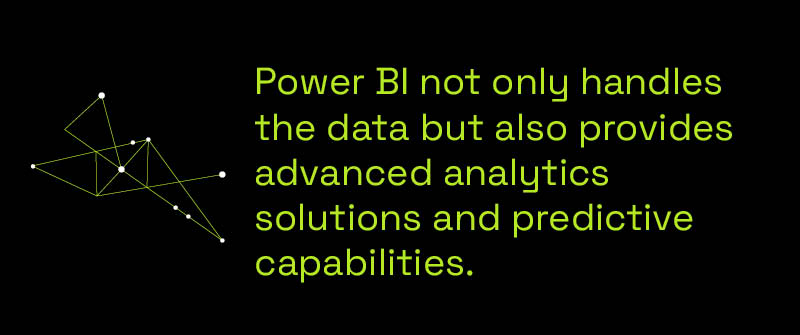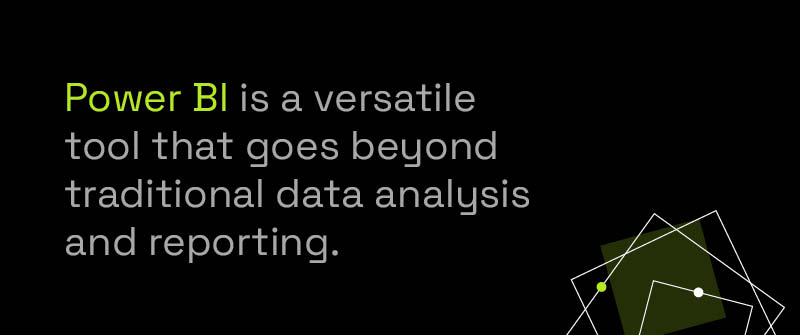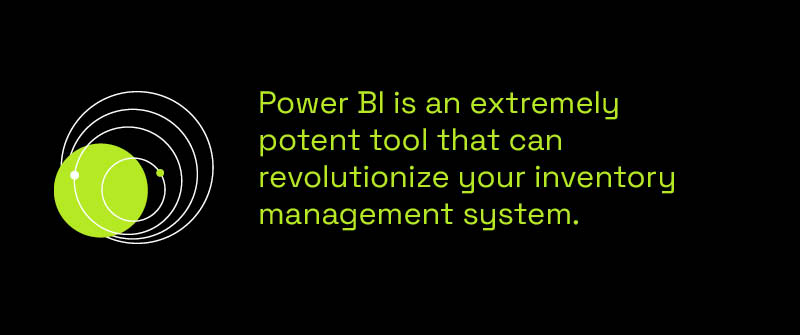
Is Power BI Used In Supply Chain Management?
In today’s fast-paced and interconnected world, the complexity of supply chain management requires advanced tools that can provide real-time insights, automate data processing, and empower decision-makers. Whether analyzing manufacturing data analytics or tracking logistics, Power BI stands out due to its versatile and powerful capabilities, which are tailored to enhance supply chain operations.
Introduction to Power BI in Supply Chain Management
Power BI is a business analytics service by Microsoft focused on providing interactive visualizations and business intelligence capabilities with an interface simple enough for end users to create their own reports and dashboards. In supply chain management, Power BI plays a pivotal role by transforming data into actionable insights, allowing companies to optimize their operations and navigate the complexities of supply and demand.
Benefits of using Power BI over traditional tools
Traditional supply chain analytics tools often fall short in handling the vast amounts of data generated daily. Unlike these tools, Power BI not only handles the data but also provides advanced analytics solutions and predictive capabilities. With features like real-time dashboards, customizable reports, and seamless integration with other Microsoft services and third-party applications, Power BI empowers supply chain professionals to make data-driven decisions quickly and efficiently. It also allows for improved visibility across the entire supply chain, identifying bottlenecks, monitoring performance, and forecasting future trends.

Bar Keeper’s Friend Case Study: A Real-World Example
Consider the successful implementation of Power BI by Bar Keeper’s Friend, a well-known cleaning product company. Before adopting Power BI, Bar Keeper’s Friend faced challenges in unifying their supply chain data from disparate systems. Their reliance on traditional spreadsheets led to delays and inefficiencies.
After integrating Power BI into their supply chain processes, they saw immediate benefits. The tool provided them with comprehensive, real-time insights into inventory levels, shipping and logistics, and supplier performance. These insights facilitated better decision-making, optimized their inventory management, and reduced operating costs.
Bar Keeper’s Friend’s example highlights the transformative impact of Power BI on supply chain management. The company achieved a streamlined and more efficient supply chain, ultimately leading to improved service levels and operational efficiency.
In conclusion, the use of Power BI in supply chain management is not just a trend but a necessity in today’s data-driven world. By providing real-time analytics, scalability, seamless integration, and user-friendly features, Power BI helps businesses to remain competitive, agile, and responsive to market demands.
What Is Supply Chain BI?
In the modern business environment, supply chain business intelligence (BI) plays a crucial role in streamlining operations and ensuring efficiency. But what exactly is supply chain BI? At its core, supply chain BI involves the use of advanced analytics and reporting tools to gather, process, and analyze data from various stages of the supply chain. This encompasses everything from Power BI for procurement and production to distribution and customer delivery, providing actionable insights that drive informed decision-making.
Definition and Scope of Supply Chain BI
Supply chain BI is a subset of business intelligence focused specifically on optimizing supply chain processes. It aims to enhance visibility, identify bottlenecks, improve forecasting accuracy, and reduce operational costs by leveraging data integration and real-time analytics. Companies can pinpoint bottlenecks, forecast demand, manage inventory levels, and mitigate risks more effectively with the insights garnered from supply chain BI tools.
Key Features and Functionality
Supply chain BI tools offer a range of features designed to address specific needs within the supply chain, including interactive data visualization. These include real-time data visualization, predictive analytics, and performance tracking. Power BI stands out with its comprehensive suite of functionalities that can be tailored to various business requirements. From interactive dashboards and custom reports to AI-driven analytics, Power BI equips business leaders with the insights needed to enhance supply chain efficiency.
Role of Power BI and Microsoft Fabric in Supply Chain BI
Power BI, coupled with Microsoft Fabric, provides an unparalleled solution for supply chain BI. Microsoft Fabric processes real-time event routing, and report building to ensure seamless data integration across multiple sources, facilitating the creation of unified data models and enabling advanced analytics. By using Power BI and Microsoft Fabric, businesses can transcend traditional reporting methods and unlock deeper insights through automated data pipelines and enhanced data governance. This unified approach not only optimizes operational processes but also supports strategic decision-making by delivering a holistic view of the supply chain, allowing users to easily explore data and derive meaningful insights.
Can Power BI Be Used As A CRM?
Power BI is a versatile tool that goes beyond traditional data analysis and reporting for supply chain analytics. When it comes to Customer Relationship Management (CRM), it offers robust capabilities that can significantly enhance business operations. Power BI’s real-time data visualization and comprehensive reporting features make it an invaluable asset for strategically managing customer interactions.

Exploring the capabilities of Power BI in CRM
Power BI is not just a business intelligence tool; it’s a powerful enabler that can serve various CRM needs. From tracking customer behavior to sales data visualization, a Power BI report will arm business leaders with actionable insights. Imagine having a dashboard that displays customer engagement metrics, lifetime value, and satisfaction scores—all in real time. Such features empower businesses to make data-driven decisions that enhance customer relationships.
Integrate Power BI with CRM Software
One of the standout features of Power BI is its seamless integration with leading CRM systems like Salesforce, Dynamics 365, and more. This allows for a centralized location where all your data converges, providing a holistic view of customer interactions. The integration ensures that data is not just collected but also analyzed and visualized in a meaningful way, facilitating better decision-making and more effective customer relationship management.
Case Studies or Examples
Business leaders often hesitate to fully commit to a new technology without seeing real-world examples. Numerous case studies illustrate how companies have successfully used Power BI to revolutionize their CRM processes. For instance, a retail giant utilized Power BI dashboards to analyze customer purchase patterns, which led to more personalized marketing strategies and a 20% increase in customer retention. In another case, a tech company integrated Power BI with its CRM software, resulting in streamlined sales processes and more accurate sales forecasts. These success stories underscore the transformative potential of Power BI in CRM.
Can Power BI Be Used for Inventory Management?
Power BI Features for Inventory Management
Effective inventory management is crucial for maintaining the balance between supply and demand while minimizing costs. Power BI is an extremely potent tool that can revolutionize your inventory management system. With Power BI, businesses can instantly visualize inventory levels, track product movement, and foresee inventory needs, thereby minimizing carrying costs. One of the most compelling features is its ability to integrate with various data sources, providing a cohesive view of inventory across multiple channels.
Power BI’s rich visualization capabilities enable users to create intuitive dashboards that highlight critical inventory metrics such as stock levels, turnover rates, and any potential issues in real time. The integration with real-world data sets ensures that businesses can make data-driven decisions that ultimately optimize inventory levels and reduce holding costs.

How to Set Up Inventory Dashboards in Power BI
Setting up inventory dashboards in Power BI can seem daunting, but with the right approach and resources, it becomes significantly more manageable. First, gather and cleanse your data to ensure accuracy. You’ll need to connect Power BI to your inventory databases, which often involves linking it with ERPs or specific inventory management software. Once connected, you can choose from numerous data visualization types to present your key metrics in the most insightful manner.
Creating a custom inventory dashboard involves dragging and dropping fields to generate tables, line graphs, and interactive maps. Key performance indicators (KPIs) such as re-order points and lead times can be set up to alert you when stock levels are low, ensuring uninterrupted operations. Leveraging Power BI for these tasks can transform complicated, time-consuming processes into streamlined, efficient operations.
Templates and Training Resources
To help businesses get started, there are numerous Supply chain Power BI template options available that offer pre-built Power BI dashboards designed specifically for inventory management. These templates provide a foundational layout that can be further customized according to your specific needs. Additionally, specialized training programs and tutorials can accelerate your team’s competency in leveraging Power BI for inventory management. From understanding the basics to mastering advanced features, there are vast resources available that cater to different learning curves.
At P3 Adaptive, we believe in empowering businesses through innovative data solutions. By harnessing the power of Power BI for inventory management, you gain not just a tool, but a strategic advantage. Partner with our experts to transform your data into clear, actionable insights that drive smarter decisions with confidence, ensuring you stay ahead in the competitive market. Contact P3 Adaptive today!
Get in touch with a P3 team member